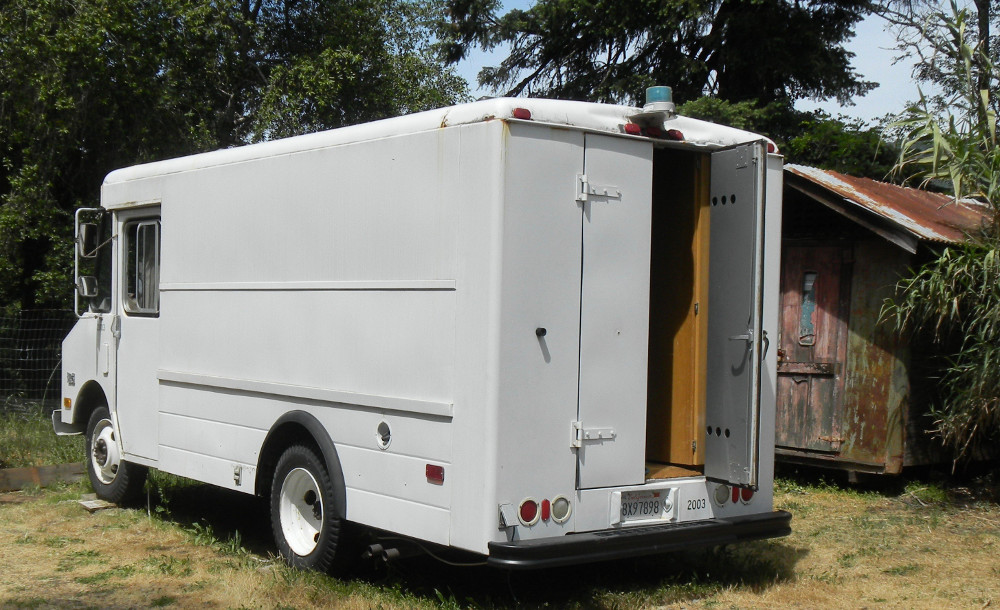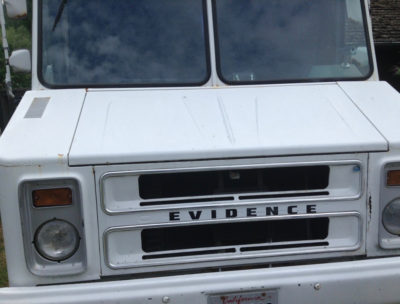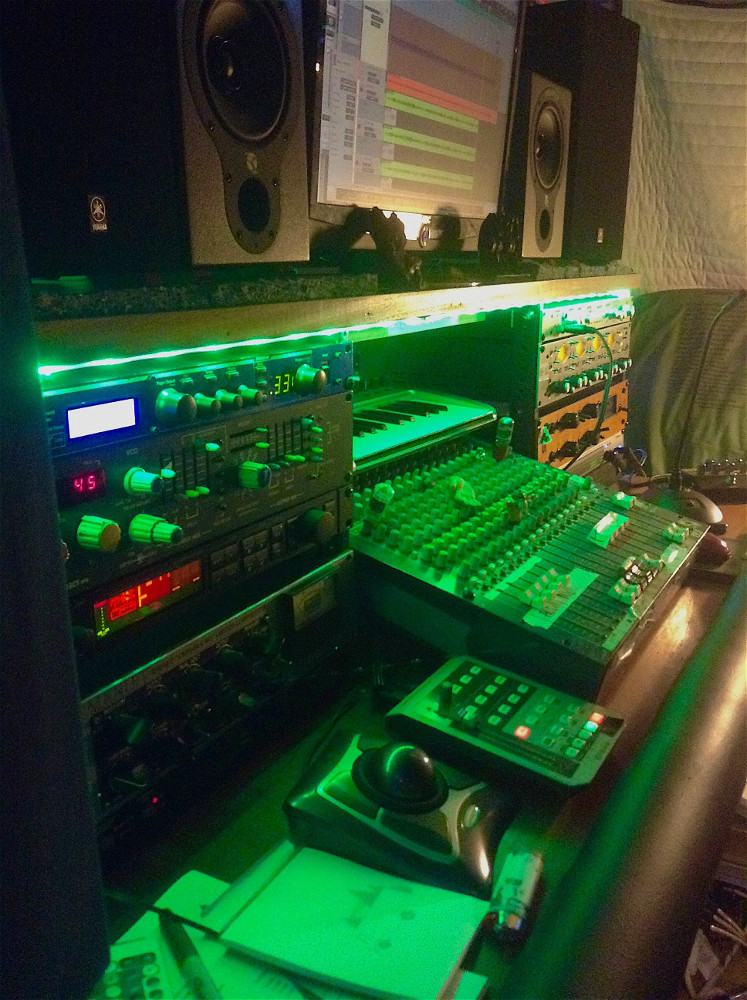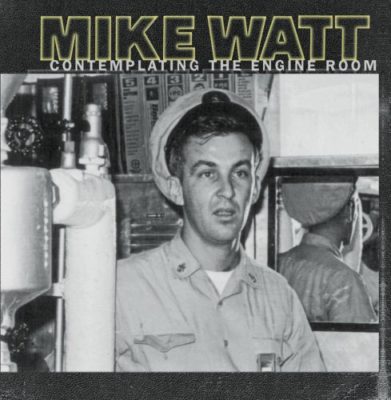Recording Studio Sweet Spot: Audio Evidence Mobile — Humboldt County, CA
The next time you’re cruising around Northern California and you see a police van pull up in your rearview mirror, don’t panic – there just may be a sonic surprise inside.
Your driver of this industrial-strength vehicle: Rob Seifert Gage, a very serious audio engineer who decided one day that he couldn’t take the LA studio scene seriously anymore. He had built up a big list of credits including Porno for Pyros, eels, Skinny Puppy, Chuckii Booker and even ex-Minutemen bass legend Mike Watt. He had worked at top facilities like Paramount, Encore, A&M, Aire L.A., and Rick Rubin’s famed Shangri La. But it was time to escape La La Land.
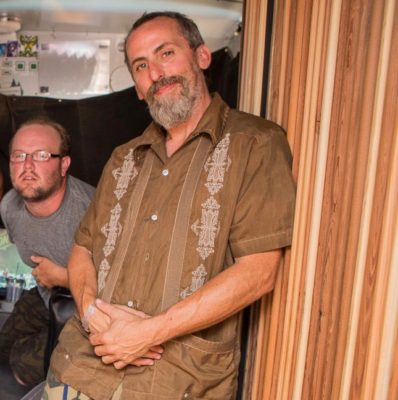
Rob Seifert Gage (r) had sufficient wanderlust to start Audio Evidence Mobile. On the left is assistant engineer Andrew Muthart.
Gage slowed things down a notch in bucolic Humboldt County, a densely forested rural county hundreds of miles north of San Francisco, complete with Redwood forests and 110 miles of coastline. But he also kept busy, becoming FOH engineer for the Mateel Community Center, a buzzing concert venue that hosts everything from Wu-Tang Clan and Merle Haggard to the Humboldt Hemp Fest, with Reggae on the River happening just down the road.
Then in 2009 something very special rolled into Gage’s life: a 1989 Chevy P30 step van that had been serving as Humboldt County’s evidence vehicle. It was on sale and Gage got it for a song, with only 1,965 miles on it. He originally intended it to house his flourishing archiving practice, but then it morphed into something much more.
Today, that van is Audio Evidence Mobile (AEM), a very tuneful truck designed to roll up and record artists wherever they’re most comfortable, whether it’s the living room where they practice or in the deep woods. And while Gage certainly didn’t invent remote recording, he’s certainly raised the game with AEM, packing it with extremely choice analog and digital gear, curated and ably applied by his decades of studio experience.
How does mixing live sound at a local venue gives him an advantage in attracting studio clients, and then doing a stellar job for them? How did he make AEM studio worthy, complete with a no-console console inside? Learn what highly desirable monitoring trick he can pull with an FM transmitter, plus why it was critically important to get the headphone playback system right – and how his live experience once again paid off in nailing that signal path.
This is a Swiss Army Knife of an audio vehicle – a roving “Sweet Spot” that’s one more reason why Northern California is an exceptional place to make music.
Facility Name: Audio Evidence Mobile
Website: contact audioevidencemobile@gmail.com or visit http://rob368.wix.com/1 (an older site)
Date of Birth: I bought the Van in 2009
Location: Southern Humboldt County, CA, and will travel 100 miles in each direction
Facility Focus: On-Site Tracking, Mixing, Composition and Editing.
Clients/Credits: Angels Cut, SoHum Girls , NPK, Frank Lucky, MIMUR, Cyclops & The Owl , Reggae on the River , Mateel Summer Arts & Music Festival, eels, Porno for Pyros, Mike Watt, North Coast Underground
Recorded Here:
Key Personnel (any assistants you want to name): Rob Seifert Gage, Andrew Muthart, Jahsua Vella
Going Mobile: The Van is the former Humboldt County Evidence Van. Since it only had 1965 miles on it, I guess it was parked a lot.
As the police did, I can park in your driveway or at your favorite place, indoors or out, and then I can basically do what every other studio can do…record something. The Analog Digital Hybrid, however, is something that no other studio has in my neighborhood.
Why did I do make a studio in a van? I live in a rural area and after having three traditional studios, I felt that it always felt like the bands were trying to work at my pace due to time restraints or cost. So since I do it at their place, it’s more on their schedule, and they are relaxed in their wild, so to speak. I usually am working on multiple projects, and when I’m parked I can go to work at anytime.
Neighborhood Advantages: AEM is based in the Southern Humboldt town of Benbow. It’s parked in a bands driveway at the moment. It’s useful for my clients to know I am around and mobile: When they’re ready, I usually am too, instead of having to say, “Well, my studio is only available from 9-5.”
Inside/Outside: My clients can get a lot recorded inside the van, or I can track entirely inside the space of their choice.
Something always winds up getting recorded inside the van, from kick and snare drums, keyboards, loads of bass overdubs, to full singer/songwriter stuff like guitar and vocals.
However, I am constantly using the band’s house, or the Redwoods, or a concert venue as the studio space and that’s what I love: It’s a challenge to make a bedroom sound good, but when you work that way every record sounds different — unlike the fact that every record done at Abbey Road, sounds like Abbey Road.
Audio Approach: When I started in the mid ‘80’s, I came from a listener’s perspective to music.
I wasn’t a player, but I did know how to hook up a stereo and change the clock on a VCR. So at first the studio was all this electronics and wires to me, whereas frequencies and musicality of those frequencies came a lot later. After a ton of recording as a first Engineer, and doing big recording sessions, I was still a “technical” engineer.
It wasn’t until a David Cassidy project came into Aire LA Studios, with an engineer/producer named Eric “ET” Thorngren, that I learned what a “creative” engineer could be. He was incredible to work with and to learn from. The way he worked with musicians on an overdub session was both intense and magical…He has such timing and a sense of balance, and he can tell you what to play if he hears something in his head.
That’s when it all began…I started using the console as an instrument, I learned better pitch hearing and I cut ½” tape like a surgeon. I also learned what a mix sounded like when it was finished. Before that, sure, I mixed, but it wasn’t easy to know when it’s done. Now I know when it’s done, however the artist always takes it a little further, for good or bad — going backwards is one of my peeves, though. With ET, we just enjoyed the studio and each other, so it wasn’t work.
Mission Statement: The local scene here extends from the first bands of kids in high school, to the seasoned guys who are really into a good-sounding record.
I know most bands from mixing live sound at our Mateel Community Center, so when they either have recorded something themselves, they have me mix on my analog gear. Or I do full productions for the well-rehearsed bands. When I moved to the country, my rates dropped way down, but I gained friendships and repeat clients who would bring me garden vegetables and always smile when they see me. Rates have risen but I still work the same professional way as when I started out.
Van Acoustics: Since the Van is thin, I needed a rear wall diffuser/absorber as per the suggestion of my friend and analog gear manufacturer, Danny McKinney. Made with all recycled woods, my builder, musician friend Chris Manspeaker, figured the math to diffuse the overdriving frequencies.
With that in place, the next step was softening the aluminum ceiling with Owens Corning 703 and a nice blackened redwood trim. A custom desk with a traditional console wrist rest was the finishing touch to help me remember all the hours on the SSL, Neve and MCI desks of my youth. When I’m recording in the van, I can open the closet doors to create a place for the artist to disappear and not have to look at me. It works really well.
System Highlights: I use Presonus Studio One as my DAW, it was a lot funner than Pro Tools when I downloaded the demo, and with the Waves and FabFilter plugins, I get a nice in-the-box preciseness — coupled with the analog fullness it feels good to me.
A Firestudio Lightpipe 32 is my interface. Plugged into that are a Universal Audio 4-710d which is my AD for my mixes back to the computer. An Apogee Ensemble and 2 Alesis AI-3 are the other AD/DA. All of those go to a TT patchbay and I can plug anything anywhere.
Preamps are a mix of all the desks that and tube gear that I used in the big leagues: Requisite Audio Y7 tubes, Audio Upgrades High Speed Mic Pre 1272, Trident/Malcolm Toft Signature 2, Focusrite ISA 2, Universal Audio 2-610, and an Allen Heath MixWizard 16, all of which can be used Line In for my Stereo Bus or Stems. I use the gear as a console with certain busses thru the appropriate gear acting as channel strips with the summing happening in the Dangerous Music D-Box.
Analog Compressors are a favorite of mine so I have a few: Manley VariMu, Avalon 747, DBX 160A, Urei 7110, Joe Meek SC2 V1, DBX 2115 EQ Comp, FMR Audio RNC and a Presonus Compressor. Having an outboard compressor is the quickest way for me to shape my sound. I am not heavy handed in compression, I enjoy the riding of the peaks to make for a fuller mix.
Effects are analog too, including Lexicon M400 xl, Lexicon Prime Time, Yamaha Rev 7, and a TC Electronics M-One. I run them through the DAW as an FX, printing them back at the end of the mix. In the box, I will use delays and any wild effects that are created for individual tracks so they are recallable every time.
The monitoring is through Yamaha NS-10’s powered by a Yamaha P2002 amp, the same as when I worked at Aire LA. The NS10s with a sub are my mains and these others are my alts — Equator D5, Fostex 6301B, a single Bose and FM Transmitter to the car stereo which I first had the experience of doing at A&M records back in the day. It’s a great way to monitor.
The Headphone system is a Hear Technologies Mixback and a Furman HD6 with Beyerdynamic , Presonus and Sennheiser Headphones. As I was putting the analog gear together, I learned quickly that if the headphone mix is coming from my inputs to the computer, and it’s all analog preamps, then every time someone wanted more or less in the cans, it changed all my levels and never really was ideal — until I treated the headphones as a monitor on stage where we use a splitter, so each desk is an individual.
I setup a monitor desk in the truck to see how well it worked before I jumped into a specific brand. The Hear Technologies Mixback has a splitter built in and 12 sends, which I don’t need but that’s a lot. The Furman boxes have four mono ins and a stereo. Drums, bass, guitars and vocals on the individual’s, and click, my talkback and playback from my DAW are on the stereo knob. Works great. No More “Turn Me Up!”
Microphones are too big of a list but I really Love my Studio Projects, 12GaugeMicrophones.com and my Gauge mics. Most gear as of late has been second-hand purchases from Reverb.com.
Other Distinguishing Characteristics: Starting with its mobile, it really is a comfortable environment, so hours can roll by. When I do sessions in the van, I have a GK Tube head and a 12” Hemp Speaker in a closet mic’d up with a SM57, with a bunch of pedals which makes it fun.
The van is on fire, you only have time to grab ONE thing to save, what is it? Computer and Drives and my Gretsch Bass …all else is racked in and would take too much time!
But if it was a slow-moving fire, James Brown “Living in America” Clock, 12gauge Microphones, Sennheiser 441, all my direct boxes (RNDI, Whirlwind and EDEN WTDI), photo book of sessions.
Rave Reviews: They love the sound and the ease of how I work…the headphone mixers are a plus they say, too.
Most Memorable Session Ever: The Angels Cut recording was fun and important to my career. It was the first band to have a top-10 single and we recorded it in the living room of the singer. Also every time I’m at Reggae on the River I save the day: I am the audio for the radio station and the video crew who always have a buzz or low levels , so I have a few adapters and direct boxes and high-functioning cables to get it clear. I tell the FOH Mixer how to mix sometimes which makes it fun: The hi-hat doesn’t have to be the loudest in the mix for the radio…unless its reggae they say.
When I bought the UA 4-710d and figured out how to use it, every session has become memorable. It’s the best of tube and solid state.
In my career my favorite records are:
Mike Watt Contemplating the Engine Room; 10cent Everybody Wins; Chuckii Booker Hotel Happiness; Angels Cut Smile; Alice DiMicele Lucky Dogs; Lost Coast Marimbas; Gerald Albright Bermuda Nights
Session You’d Like to Forget: When they are all finished, I typically forget them all, until I hear the songs again, then all the colors are remembered.
However it’s the one where I recorded sitar and Indian violin at a studio I ran on the main drag in town. Every other session the road wasn’t a problem, but that evening after our session, my dear friend Rosie calls and said she can hear trucks on the recording in her quiet house in the Hills. I forgot to Hi-Pass everything before I mixed. With the Hi-Pass it was fine.
Dream Session: Any sesh with my good brother Stephen Perkins (Jane’s Addiction, Porno for Pyros), because you are only as good as your drummer. Dream band: Perkins, Stevie Ray Vaughn, Ray Manzarek, Miles Davis and James Brown, with Don Was on Bass.
Please note: When you buy products through links on this page, we may earn an affiliate commission.







